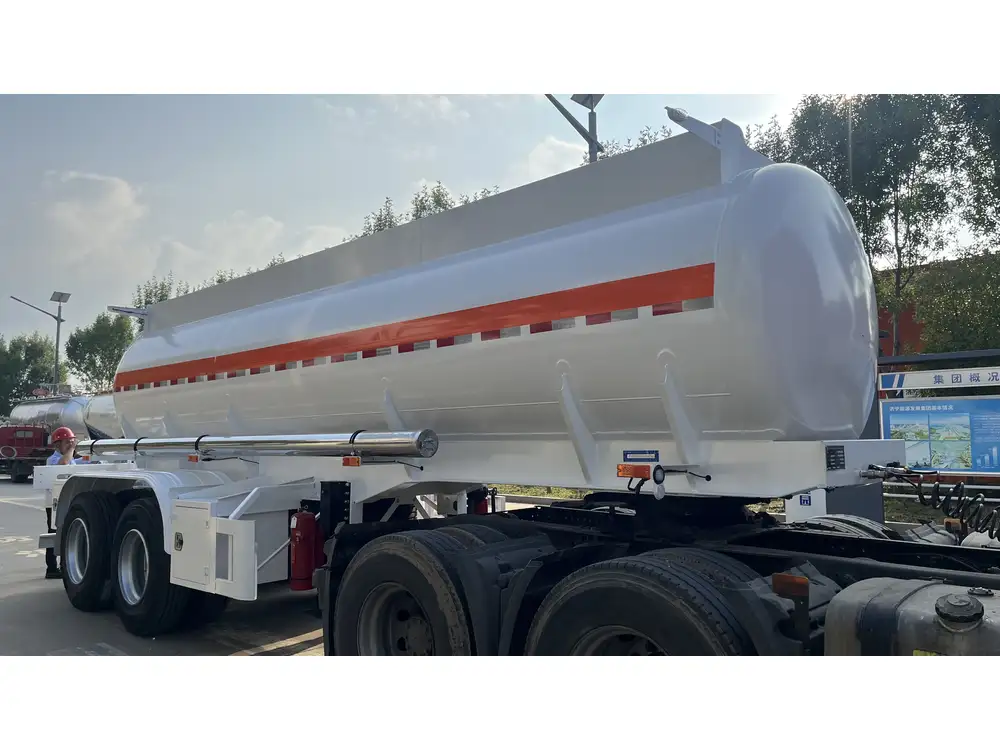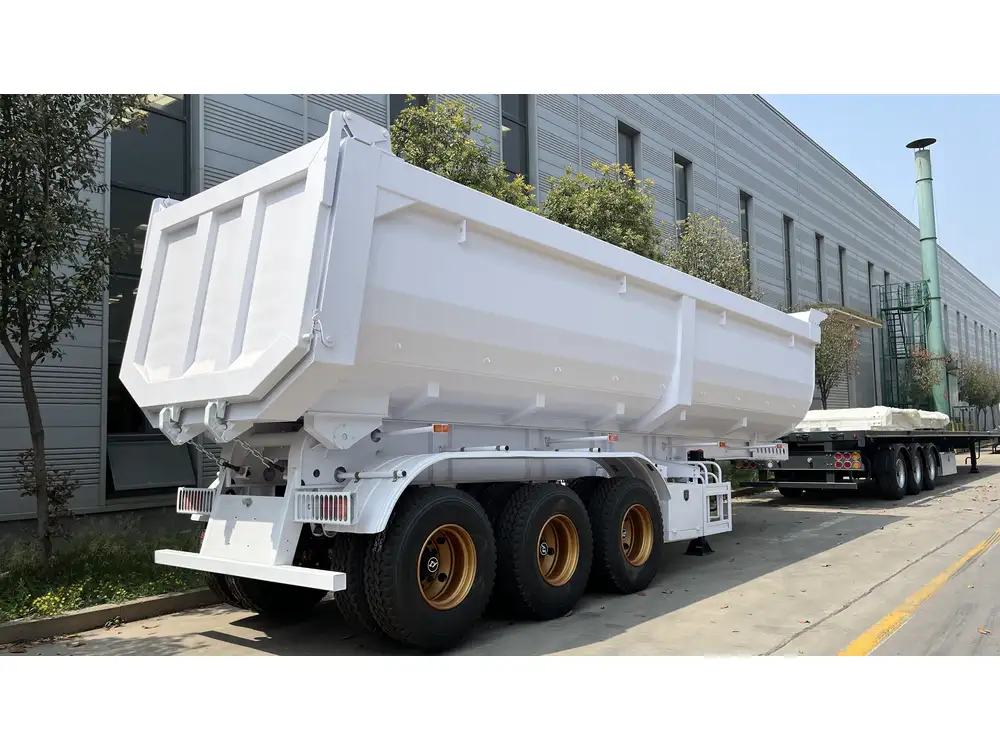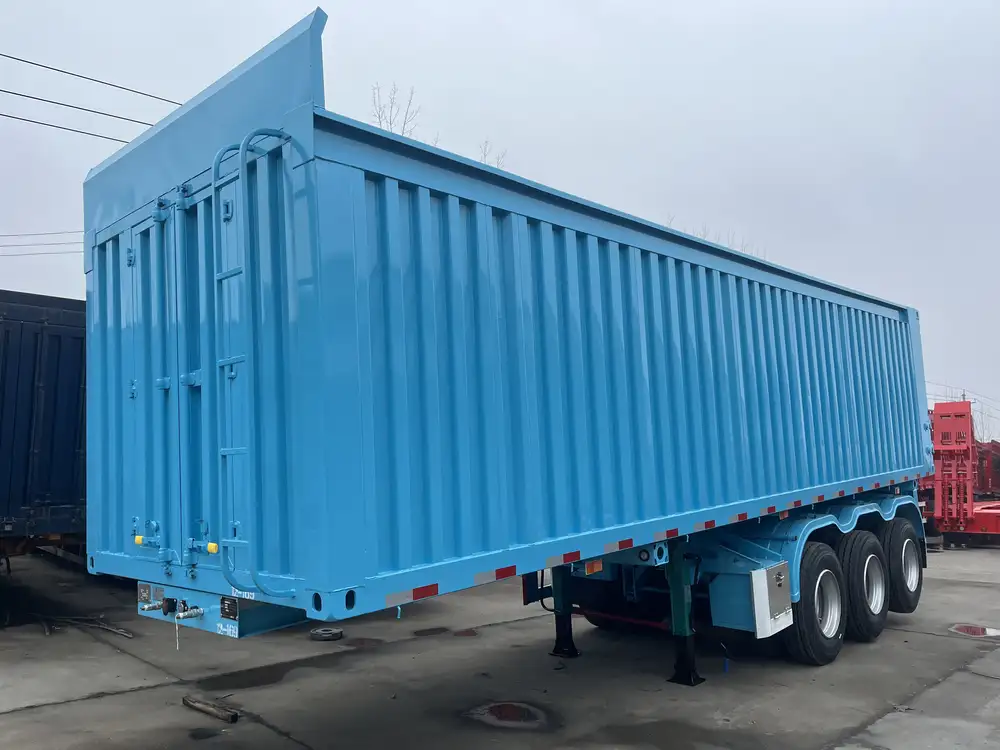Introduction
When navigating the logistics and transportation landscape, knowing the weight of a 40ft container trailer is crucial for manufacturers, freight companies, and logistics managers. In this comprehensive guide, we will explore the nuances of 40ft container trailers, breaking down their weight implications, structural factors, and optimal load capacities. This guide aims to equip you with all the necessary insights for effective decision-making in your shipping and manufacturing processes.
What Is a 40ft Container Trailer?
A 40ft container trailer, often referred to as a “40ft shipping container,” is a standard unit utilized in cargo transport. These trailers are predominantly designed to carry intermodal containers, measuring 40 feet in length, with a typical width of 8 feet and a height of 8.5 feet. Due to their robust construction, they are capable of securely holding a wide range of goods, including industrial components and consumer products.

Types of 40ft Container Trailers
Standard Dry Van Trailers
- Commonly used for general cargo, these trailers are designed for non-refrigerated goods.
Reefer Trailers
- Equipped with refrigeration units, reefer trailers are vital for transporting perishable items such as food and medicines.
Flatbed Trailers
- Ideal for oversized loads, flatbed trailers are devoid of sides and a roof, allowing for easy loading and unloading of heavy machinery or bulky cargo.
Curtain-Sider Trailers
- Combining the benefits of flatbeds and dry vans, these trailers have flexible side curtains, making them easier to load while still providing protection to the cargo.
Weight Variations of a 40ft Container Trailer
Factors Influencing Weight
The weight of a 40ft container trailer is affected by several critical factors:
Material Composition: The materials used in constructing the trailer frame and the container itself significantly influence overall weight. Common materials include high-strength steel and aluminum, with the latter offering lighter weight variants.
Tare Weight vs. Gross Weight: Understanding the tare weight (the trailer’s weight when empty) versus the gross weight (the combined weight of the trailer and its cargo) is essential. The tare weight of a standard 40ft container trailer typically ranges between 4,700 lbs (approximately 2,130 kg) and 5,400 lbs (approximately 2,450 kg).

Weight Breakdown Table
| Type of Container | Tare Weight (lbs) | Tare Weight (kg) | Maximum Payload (lbs) | Maximum Payload (kg) | Gross Weight (lbs) | Gross Weight (kg) |
|---|---|---|---|---|---|---|
| Standard Dry Van | 4,700 – 5,400 | 2,130 – 2,450 | 59,000 | 26,760 | 64,700 – 65,400 | 29,890 – 29,900 |
| Reefer | 8,000 – 9,000 | 3,628 – 4,082 | 46,000 | 20,865 | 54,000 – 55,000 | 24,494 – 24,948 |
| Flatbed | 3,800 – 4,500 | 1,724 – 2,041 | Varies by load | Varies by load | Varies by load | Varies by load |
| Curtain-Sider | 4,600 – 5,200 | 2,086 – 2,359 | 59,000 | 26,760 | 63,600 – 64,200 | 28,842 – 29,000 |
Note: Payload capacities and tare weights can vary based on manufacturer specifications and design.
Legal Restrictions: Weight Limits and Regulations
Federal Regulations
In the United States, federal regulations dictate weight limits for commercial trucking. The Federal Highway Administration (FHWA) outlines specific weight regulations as follows:
- Maximum Gross Vehicle Weight (GVW): 80,000 lbs (approximately 36,287 kg) for a standard truck and trailer combination.
- Axle Weight Limits: The maximum allowable weight per axle is usually set at 20,000 lbs for single axles and 34,000 lbs for tandem axles.

International Regulations
For operations outside the United States, international guidelines, including those outlined by the International Maritime Organization (IMO), dictate specific weight limits for shipping activities. Shippers must adhere to these guidelines to ensure compliance and safety across borders.
Cargo Considerations: What Can You Load?
Loading a 40ft container trailer effectively requires understanding its capabilities regarding cargo types and weights. Here’s a succinct overview of suitable cargo types:
- Bulk Goods: Ideal for heavy commodities like metals, grains, and aggregates.
- Consumer Products: Appliances, electronics, and packaged goods fit perfectly in standard containers.
- Liquid Cargo: Reefer trailers handle perishable liquids, whereas specialized containers cater to bulk liquids.
- Automotive Parts: Light- to medium-weight auto components can be shipped in these containers.
Optimizing Load Distribution
Achieving optimal load distribution is essential for vehicle stability and compliance. Here are some strategies:
- Center of Gravity: Load heavier items towards the trailer’s center to mitigate tipping risks.
- Weight Distribution: Ensure even weight distribution across axles to avoid exceeding weight limits.
- Bracing and Securing: Utilize appropriate bracing methods to prevent cargo movement during transport.

Cost Implications of Weight Management
Managing the weight and load of a 40ft container trailer has direct financial implications. Here’s how:
| Cost Factor | Description |
|---|---|
| Fuel Efficiency | Heavier loads correspond to higher fuel consumption. |
| Tolls and Fees | Overweight penalties can lead to significant fines. |
| Insurance Costs | Higher cargo values may increase insurance premiums. |
| Maintenance Costs | Increased wear on tires and axles due to overload. |
By understanding these factors, businesses can save on operational costs while ensuring compliance with regulations.
Frequently Asked Questions
What is the standard weight capacity for a 40ft container trailer?
The weight capacity can vary considerably depending on the trailer type. For a standard dry van, it’s typically around 59,000 lbs (26,760 kg), but reefer trailers may have a lower capacity due to their cooling equipment.

How much does a 40ft container weigh when fully loaded?
The gross weight of a fully loaded 40ft container can range from 64,700 lbs to 65,400 lbs (approximately 29,890 kg to 29,900 kg), depending on the cargo type and loading practices.
Are there different customs and regulations for different countries regarding container weight?
Yes, each country has its own regulations regarding weight limits. It’s vital for shippers to familiarize themselves with local regulations to avoid non-compliance penalties.
Conclusion
Understanding the weight of a 40ft container trailer transcends simple metrics; it embodies an intricate web of regulations, specifications, and practical implications. From knowing the various tare weights and load capacities to navigating legal restrictions and optimizing load distribution, our comprehensive analysis empowers manufacturers and logistics providers to make informed decisions. Take control of your shipping processes today, leveraging the insights provided to optimize your logistic operations and ensure success in every shipment.
Stay tuned for our next article, diving deeper into navigating the complexities of shipping regulations worldwide.



